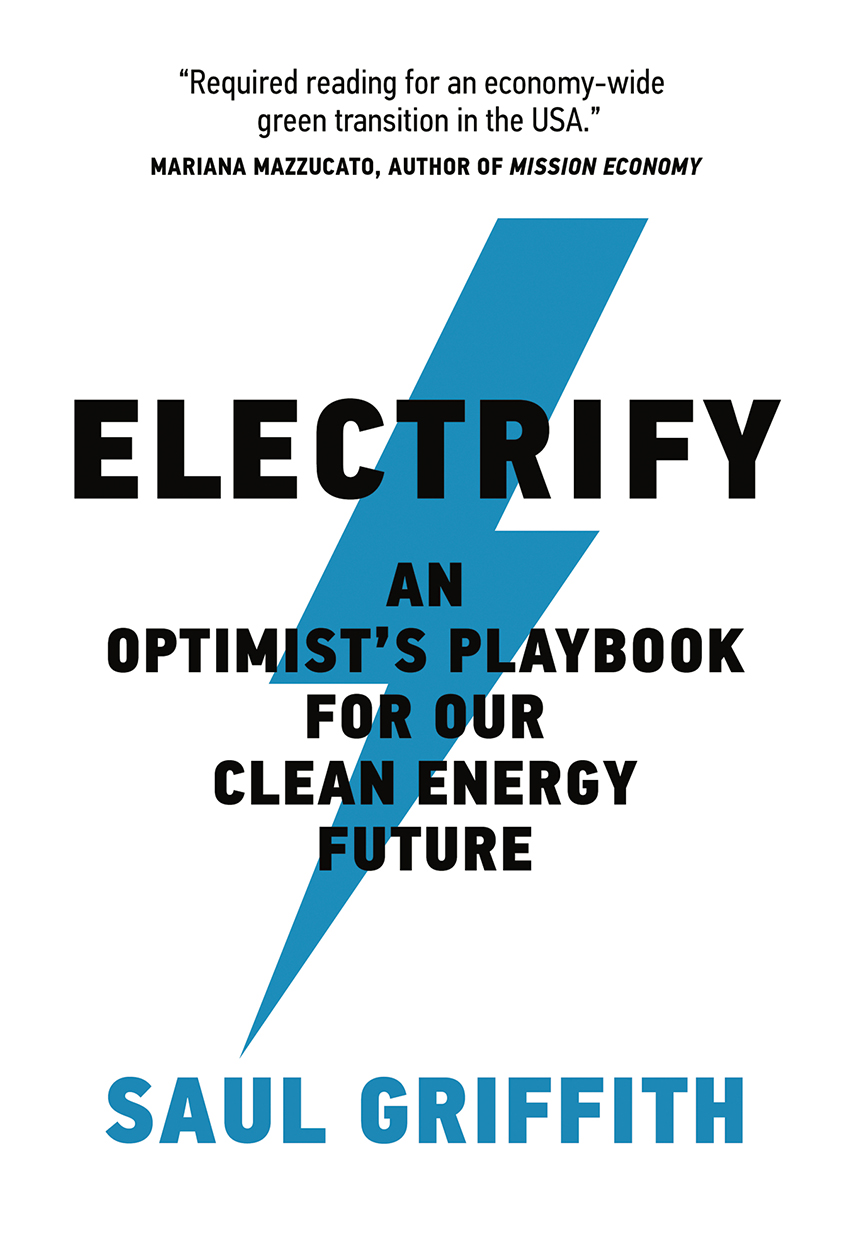By Ray Bert
Electrify: An Optimist’s Playbook for Our Clean Energy Future, by Saul Griffith. Cambridge, Massachusetts: The MIT Press, 2021; 288 pages, $24.95.
Optimism is not one of the first concepts that springs to mind when discussing climate change. Especially in the wake of 2021, a year that — among other climate-related calamities — again saw massive wildfires and drought in the Western U.S. and news of the potential collapse of the so-called Doomsday Glacier in Antarctica by the end of the decade.
But Saul Griffith’s new book, Electrify: An Optimist’s Playbook for Our Clean Energy Future, maintains that optimism is exactly what we need, if only because pessimism (especially about the politics of the issue) limits our possibilities. “This book doesn’t start with the question of, ‘What is politically possible?’” Griffith writes, “but asks what is technically necessary to reach a climate solution that is also a great economic pathway for a country.”
The book is called Electrify because that is the basis of the solution: Electrify everything.
Done properly, and in concert with massive expansion and investment in the electric grid while rewriting antiquated regulations designed for the fossil fuel era, the United States — and other countries — can massively reduce our carbon dependence in the creation and use of power. And, Griffith argues, we can do it without massive personal changes. You can have a big vehicle; it will just be electric. Ditto a big home, albeit one covered in solar panels. Electrify’s posited future is also notable for what it does not rely on: big, currently unfeasible or not yet invented tech innovations, instead focusing on the philosophy of “Is it ready and does it work?”
Griffith, founder of a nonprofit dedicated to the same principles as his book, is particularly well positioned to back up his assertions about what the situation is and what is possible, based on data from an extensive study he did of the U.S. energy economy, performed under contract to the U.S. Department of Energy. His engineering background shows in his technical descriptions, particularly related to the potential of renewables like solar, wind, and hydro power that will replace fossil fuels. But he also excels at explaining the historical, policy, and economic issues at play. Each chapter has a helpful prefacing section of bullet-point factoids or concepts that set up the analysis to follow.

But what is perhaps most revelatory about Electrify is the way it methodically knits together so many pieces of its complex and multifaceted approach to its simple premise. And the way it forcefully argues for the technology, policies, investments, and individual decisions that matter the most in getting us closer to zero carbon while simultaneously modernizing our infrastructure and economy and creating tens of millions of jobs in the process.
As Griffith notes, 75% of U.S. greenhouse gas emissions come from the combustion of fossil fuels in our energy system. And if we can summon the will to solve that problem while also reaping the long-term benefits, then through a combination of inspiration and competition, America can help lead the rest of the world in the same direction.



